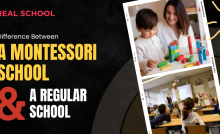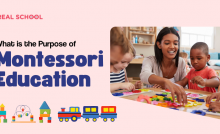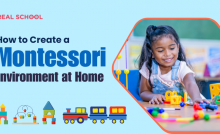Hands-On Learning: The Core of Montessori Teacher Training


Hands-on learning lies at the heart of Montessori teacher training, embodying the essence of the Montessori educational philosophy. Aspiring Montessori educators engage in practical experiences, immersing themselves in the world of Montessori materials and classroom dynamics. This hands-on approach empowers teachers to become skilled guides who foster independence, critical thinking, and a love for learning in their students. In this article, we will explore why hands-on learning is essential in Montessori teacher training and how it shapes educators to unleash the full potential of Montessori education.
-
Experiencing the Montessori Environment
Hands-on learning allows aspiring Montessori teachers to experience the Montessori environment firsthand. By observing and interacting within a Montessori classroom, educators gain valuable insights into the prepared environment, the arrangement of learning materials, and the flow of the daily routine. This immersion fosters a deep understanding of the classroom dynamics and the role of the teacher as a guide and facilitator of learning.
-
Mastering Montessori Materials
Montessori classrooms are equipped with a diverse array of learning materials, each designed to serve a specific purpose in the child’s development. Hands-on learning gives educators the opportunity to master these materials, understand their purpose, and learn how to present them effectively to students. Through practice and guidance, teachers become adept at selecting and presenting materials that align with each child’s unique developmental stage and interests.
-
Observing and Understanding the Child
In Montessori education, observation is a crucial tool for understanding the child’s individual needs and interests. Hands-on learning allows educators to practice the art of observation, honing their ability to keenly observe each child’s work habits, challenges, and areas of strengths. This observation informs the teacher’s approach in providing tailored support and guidance to nurture the child’s overall development.
-
Embracing Self-Directed Learning
Hands-on learning encourages educators to experience self-directed learning themselves. As they engage with Montessori materials and resources, teachers explore topics of interest, ask questions, and seek answers independently. This firsthand experience reinforces the importance of fostering self-directed learning in students, inspiring a sense of curiosity and a passion for lifelong learning.
-
Developing Classroom Management Skills
A Montessori classroom operates with a unique set of principles, allowing children the freedom to choose their activities and work independently. Hands-on learning helps educators develop effective classroom management skills that balance freedom with responsibility. Teachers learn to create a harmonious and respectful classroom environment that supports self-discipline and cooperation among students.
-
Nurturing Emotional Intelligence
Montessori education recognizes the importance of emotional intelligence in a child’s development. During hands-on learning, educators gain insights into the importance of creating a nurturing and supportive classroom culture. They learn to foster emotional intelligence in students, encouraging them to recognize and express their feelings and empathize with others.
-
Adapting to Individual Learning Styles
Every child learns in a unique way, and Montessori education values individual learning styles. Hands-on learning allows educators to explore various teaching methods and approaches, adapting their strategies to meet the diverse needs of their students. This flexibility enables teachers to create meaningful and engaging learning experiences for all children.
-
Encouraging Collaboration and Peer Learning
Hands-on learning often involves collaborative activities and peer learning experiences. Educators learn to foster a sense of community in the classroom, encouraging students to work together, share ideas, and support one another’s learning. Collaboration becomes an essential aspect of the Montessori learning journey.
-
Building Confidence and Competence
Through hands-on learning, educators build confidence and competence in their ability to implement the Montessori approach effectively. Practical experience reinforces the knowledge gained through theoretical training, enabling teachers to create a positive and transformative impact on their students.
-
Continuity of Lifelong Learning
Hands-on learning in Montessori teacher training instills a commitment to lifelong learning in educators. The journey of becoming a Montessori teacher is continuous, involving ongoing professional development, exploration of new ideas, and a passion for growth and improvement.
Conclusion
Hands-on learning is the core of Montessori teacher training, empowering educators to become skilled guides who unleash the true power of Montessori education. By immersing themselves in the Montessori environment, mastering learning materials, observing and understanding the child, and embracing self-directed learning, educators become advocates for child-centered education. Through practical experiences, teachers nurture emotional intelligence, adapt to individual learning styles, and foster collaboration and peer learning. The transformative impact of hands-on learning shapes educators who are confident, competent, and committed to lifelong learning. As they embrace the essence of Montessori education, these educators create a lasting impact on the lives of their students and inspire a love for learning that extends far beyond the classroom.
FAQs (Frequently Asked Questions)
How does hands-on learning in Montessori teacher training benefit educators with diverse teaching backgrounds?
Can hands-on learning be effectively integrated into online or blended Montessori teacher training programs?
How does hands-on learning reinforce the importance of observation and individualized instruction in Montessori classrooms?
What role does hands-on learning play in fostering a sense of community and collaboration among students in the Montessori classroom?
Are there opportunities for ongoing hands-on learning and professional development after completing Montessori teacher training?
Recent Posts
What are the Advantages of Online Teaching at The Real School?
In the article -"What are the Advantages of Online Teaching at The Real School?" we…
What is the Full Form of School?: Unveiling the Acronym
The term "school" carries profound significance in the realm of education, representing more than just…
What is Math Full Form?: Cracking the Code
Mathematics, often referred to as "Math," is a subject that elicits various reactions from students…
What is Full Form of Homework?: Decoding Academics
Homework, an integral part of the academic journey, often raises questions about its purpose and…
What is Full Form of Teacher?: Demystifying Education
In the intricate tapestry of education, teachers stand as the pillars shaping the intellectual and…
What is Real Education?: Discovering Its Essence and Impact
The concept of real education is evolving, transcending traditional views that equate it solely with…


